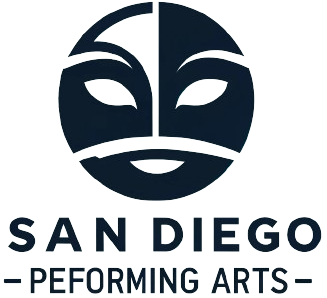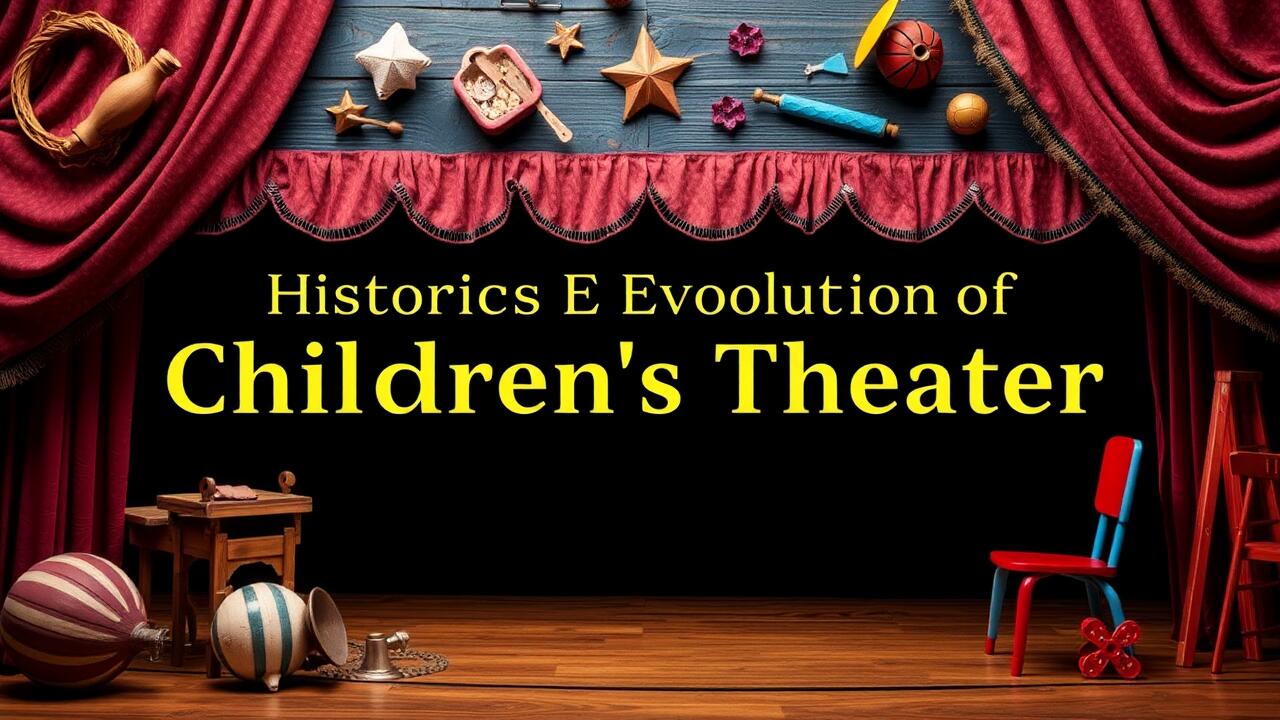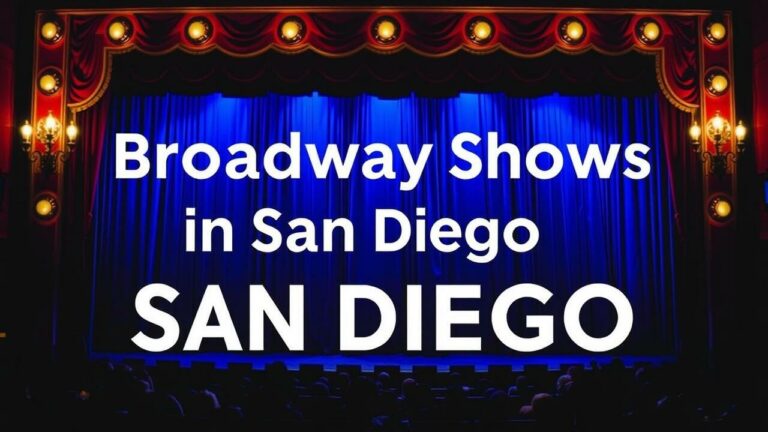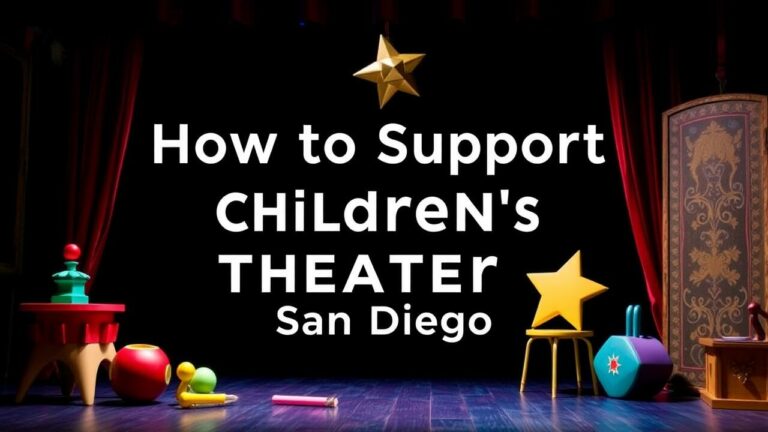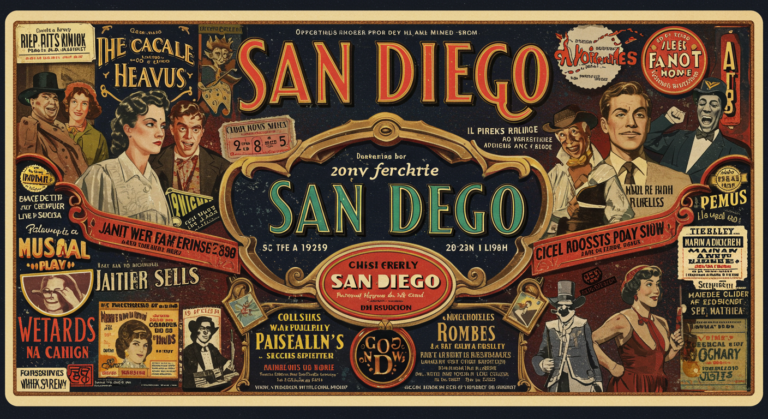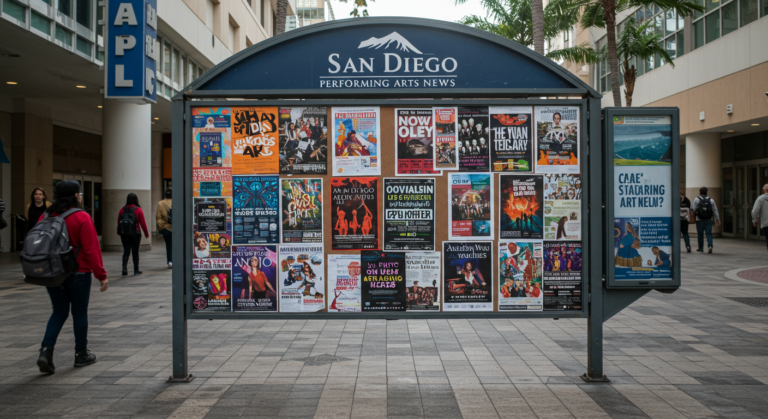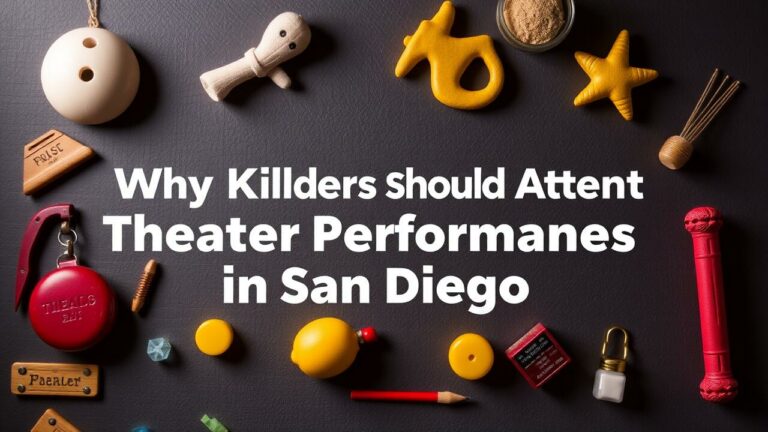Historical Evolution of Children’s Theater in San Diego
Table Of Contents
Exploring the Historical Evolution of Children’s Theater in San Diego
Key Takeaways
- Development of youth performance art in San Diego from initial stages
- Expansion of youth performance art throughout the 1900s
- Progress in staging methods and artistic approaches
- Prominent youth performance art organizations in San Diego
- Significance of youth performance art in modern culture
Historical Evolution Of Children’s Theater In San Diego | Early Beginnings of Children’s Theater in San Diego
The Historical Evolution of Children’s Theater in San Diego began to take shape in the mid-20th century, influenced by the vibrant local culture and community initiatives. The establishment of groups like Christian Youth Theater marked a significant turning point, as they sought to engage young performers and audiences through creative expression. Early productions often took place in venues such as the Liberty Theater and The Old Globe Theatre, both of which played vital roles in fostering a love for musical theater among San Diego’s youth. The city’s rich cultural landscape also included influences from the nearby San Diego Zoo and the historic San Diego Mission, providing unique storytelling opportunities. As these nascent theater companies flourished, they laid the groundwork for a thriving regional theatre scene that would later encompass diverse styles and themes, reflecting the evolving tastes of the community.
Historical Evolution of Children’s Theater in San Diego | The Influence of Local Culture on Theater Practices
The Historical Evolution of Children’s Theater in San Diego reflects the diverse cultural influences that have shaped theatrical practices over the years. Venues such as the Globe Theatre and the Park Theatre have played significant roles in offering a variety of performances to the community. The unique blend of styles, including experimental theatre and traditional Greek theater, can be seen in productions that appeal to young audiences. Institutions like San Diego State College have contributed to this evolution, fostering new talent and innovative approaches to children’s theater.
Community theater has been a vital force in promoting engagement within San Diego County. The emergence of groups utilizing spaces like the Vista Theatre and Ritz Theatre has enriched the local landscape, encouraging families to experience live performances. Festivals and events at venues such as the Strand Theatre and Plaza Theatre celebrate this vibrant culture. These initiatives not only entertain but also educate children, highlighting the continued importance of the Historical Evolution of Children’s Theater in San Diego.
Formation of Initial Theater Groups and Organizations
The Historical Evolution of Children’s Theater in San Diego began with the early formation of local theater groups, which drew inspiration from various theatrical influences such as Broadway theatre and street theater. Venues like the Garrick Theatre and the Rialto Theatre played pivotal roles in showcasing these emerging performances. The thriving movie theaters, such as the Fox Theatre and Balboa Theatre, brought diverse audiences and influenced the style and content of children’s productions. With events like the Panama-California Exposition highlighting local talent, these early organizations laid a foundational framework for future generations.
Community theatre gained momentum as local actors and directors sought to engage young audiences. The establishment of groups at venues such as the Rivoli Theatre and the Casino Theatre allowed for the exploration of storytelling in an interactive setting. The drive-in theatre culture also impacted the evolution, offering unique experiences for families. As children’s theater began to flourish, productions at the Spreckels Theatre and the historic Balboa Theatre demonstrated the potential of theatrical arts to connect with youth, establishing a rich legacy in the Historical Evolution of Children’s Theater in San Diego.
- The creation of children’s theater companies allowed for more tailored performances for younger audiences.
- Local schools began collaborating with theater groups, integrating arts education into their curriculums.
- Community support was essential, as parents and local businesses rallied around the productions.
- Festivals and showcases provided platforms for young performers to gain experience and exposure.
- The incorporation of various cultural narratives reflected the diverse community of San Diego.
- Partnerships with local arts organizations helped to expand resources and reach a wider audience.
- These early theater groups set the stage for future professional children’s theater initiatives in the region.
The Growth of Children’s Theater in the 20th Century
The Historical Evolution of Children’s Theater in San Diego during the 20th century witnessed remarkable transformations influenced by various cultural and social dynamics. The establishment of regional theatres such as the Aztec Theater and the Egyptian Theatre provided dedicated venues for children’s theater, allowing for the creation of theater productions specifically aimed at young audiences. The Federal Theatre Project played a vital role in promoting accessibility to the arts, while the California Pacific International Exposition showcased innovative performances that captivated the imagination of children. The use of spaces like the opera house, lyceum theater, and amphitheater not only enriched the theatrical landscape but also incorporated elements from the circus, creating a distinctive flavor in storytelling and performance styles. These developments culminated in a vibrant scene that fostered a deep appreciation for children’s theater, pivotal in the ongoing historical evolution of children’s theater in San Diego.
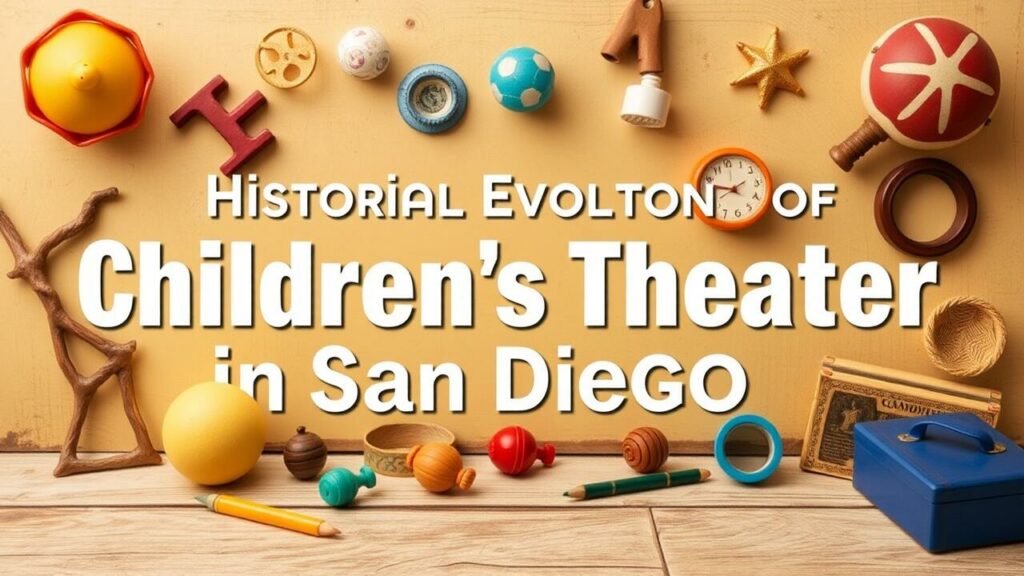
Key Milestones and Landmark Productions
The Historical Evolution of Children’s Theater in San Diego showcases significant milestones that have shaped its landscape. One of the earliest contributors was the San Diego Junior Theater, founded in the 1940s, which set a precedent for youth theater programs throughout the region. This initiative inspired other community-focused groups, including the Little Theater Group and Civic Theater, to create engaging platforms for young performers. The introduction of productions at venues like the Pacific Square Theatre and the Margo Theater highlighted the importance of children’s participation in the arts, fostering creativity and self-expression.
Landmark productions have marked key moments in San Diego’s theater scene, influencing both participants and audiences. The transition from small, intimate performances to grand theater experiences reflects the growing demand for high-quality children’s shows. The San Diego Civic’s commitment to education through theater prepares kids for lifelong skills in collaboration, communication, and problem-solving. As the movement evolved, the emphasis on inclusivity and community engagement solidified children’s theater’s role as a vital component of San Diego’s cultural fabric, enabling young artists to thrive and share their stories.
Impact of Education and Community Involvement
The Historical Evolution of Children’s Theater in San Diego has been significantly shaped by educational initiatives and community involvement. The formation of the junior theater wing provided a platform for aspiring theater actors to hone their craft while also engaging with audiences. The involvement of the San Diego Recreation Department facilitated the establishment of various theater programs, amplifying the reach of children’s theater productions throughout the city. Iconic venues like the North Park Theatre and the state theatre became vital locations for performances, further embedding theater into the cultural fabric of San Diego.
Grassroots organizations such as the San Diego Guild and efforts at commercial theatre spaces have created a vibrant ecosystem for young artists. The civic theater exterior and the Hollywood theater marquee have drawn attention to productions and events that celebrate youth talent. With a focus on creative expression, these initiatives have encouraged families to attend performances, fostering a sense of community around the arts. As these programs continue to evolve, they reflect the ongoing Historical Evolution of Children’s Theater in San Diego, enriching the lives of participants and audiences alike.
Advancements in Production Techniques and Styles
The Historical Evolution of Children’s Theater in San Diego showcases a remarkable transformation influenced by advancements in production techniques and styles. Venues like the Fairmont Theatre and Liberty Theater have adapted to showcase dynamic indoor theater experiences, enhancing audience engagement. The incorporation of modern technology, inspired by Hollywood theater aesthetics, offers rich, immersive environments where storytelling flourishes. Notable spaces such as the Conrad Prebys Theatre and the Natural History Museum have hosted creative theater exhibition items, reflecting diverse artistic expressions. The evolution is also marked by innovative approaches in marionette theater and community collaborations, including initiatives from Diego State College and Theatre Paramount Pictures, emphasizing the role of children’s theater in contemporary society.
Incorporation of Modern Technology in Children’s Theater
The Historical Evolution of Children’s Theater in San Diego has seen a remarkable transformation with the adoption of modern technology. The integration of digital elements has enhanced the storytelling experience for young audiences, moving beyond traditional performances. Historic venues like the Midget Village Theatre and the Isis Theatre have experimented with innovative lighting and sound techniques, creating immersive environments. These advancements are evident in productions staged in the Logan Heights Theater and the Superba Theatre, reflecting the progressive-minded community theatre ethos prevalent in the region.
As the California Pacific Exposition introduced cutting-edge theatrical techniques, local companies began to embrace various technologies to captivate audiences. The evolution of illusion theatre has been particularly influential, allowing performers to engage children through mesmerizing visuals and interactive elements. Notable theaters such as the Mission Theatre and the White Theatre have adopted these methods, bridging the gap between classic storytelling and contemporary performance art. This shift illustrates how historical practices have influenced the modern landscape of children’s theater in San Diego, making it more dynamic and appealing to families across Diego County.
- Incorporation of multimedia elements like projections to enrich narratives.
- Utilization of interactive apps for audience participation during performances.
- Use of high-definition sound systems to enhance audio experiences.
- Implementation of augmented reality to bring stories to life.
- Engagement of social media for promotions and audience feedback.
- Integration of online streaming options to broaden accessibility.
- Collaboration with local tech companies to innovate theatrical designs.
Evolution of Storytelling and Performance Methods
The Historical Evolution of Children’s Theater in San Diego reveals a rich tapestry of storytelling methods that have transformed over the decades. Performance venues such as the Civic Auditorium, Metro Theatre, and the award-winning outdoor Sunshine Brooks Theater have hosted a myriad of theatrical performances that brought children’s classics to life. The vibrant backdrop of San Diego’s cultural landscape, including the historic Carteri Theatre and Silver Strand Theatre, has encouraged innovative approaches to engaging young audiences and enriching their theatrical experiences.
Throughout the years, children’s theater has embraced various storytelling techniques, adapting traditional narratives to resonate with contemporary themes. Influences from local culture have been significant, shaping how stories are told on stages like the Open Air Theatre and Civic Concourse. Companies such as Victory Theatre Negro have contributed to this evolution by integrating diverse narratives that reflect the community’s dynamics. This ongoing transformation highlights the importance of creativity in drawing children into the world of performance and fostering a love for the arts.
Notable Children’s Theater Companies in San Diego
The Historical Evolution of Children’s Theater in San Diego reflects a vibrant tapestry woven through various notable companies that have shaped the landscape of performing arts for kids. The Cabrillo Theatre, recognized as a landmark venue, has hosted numerous pivotal productions, contributing to its status as one of the popular attractions in the community. Footlights Theater Group stands out for its engaging high school shows, allowing young performers to explore their passion for theatre while gaining invaluable experience in a professional theatre atmosphere. The Academy, with its focus on educational initiatives, produces different productions that not only entertain but also educate young audiences about the art of storytelling. Through these organizations, the legacy of children’s theater continues to flourish, celebrating its rich history in San Diego and inspiring the next generation of artists.
Profiles of Influential Troupes and Their Contributions
The historical evolution of children’s theater in San Diego has been significantly shaped by influential troupes that have pioneered various productions and performances. One notable company, the Kinema Theatre, acted as an integral venue where many famous shows were held. These productions often featured original architects and resulted in some of the most popular performances for children. The combination of historical storytelling and artistic flair captured the imagination of young audiences. Tickets to these events became highly sought after, turning the theater into a primary attraction for families seeking entertainment and cultural enrichment.
Another key troupe in the scene was Thomas Productions, renowned for its ambitious projects that included many scene changes and innovative use of space within the rehearsal hall. They placed a strong emphasis on developing engaging narratives, which often incorporated themes relevant to children and their social contexts. Their shows, frequently highlighted at the exposition headquarters, offered a unique blend of educational content and entertainment, making them a staple in San Diego’s artistic landscape. These companies not only enriched the cultural fabric of the city but also contributed to the ongoing historical evolution of children’s theater in San Diego.
“`html
| Troupe Name | Established | Key Contributions | Notable Productions |
|---|---|---|---|
| Kinema Theatre | 1980 | Integral venue for children’s performances, showcasing original plays | The Enchanted Forest, Tales of Wonder |
| Thomas Productions | 1995 | Innovative project designs with engaging narratives and educational themes | Adventures in Learning, The Magic of Friendship |
| Young Performers’ Theater | 2005 | Focus on performances by children for children, fostering talent | Once Upon a Time, Kids in the Spotlight |
| San Diego Youth Theatre | 2010 | Community outreach programs aimed at integrating arts in education | Dreams in the Stars, The Little Mermaid |
“`
Major Festivals and Events Celebrating Children’s Theater
San Diego has celebrated its Historical Evolution of Children’s Theater through a variety of festivals and events that highlight the creativity of young performers. Events like the annual show at the historic Fisher Opera House serve as a cornerstone for local youth, providing a platform for the first children’s theater productions in the area. These gatherings not only showcase full-scale productions but also feature drama workshops and rehearsals that engage schools and community groups. The Mission Theatre Janet often hosts these events, supporting a vibrant community of budding artists.
Other notable celebrations include festivals that take place in prestigious venues such as the Globe Productions and the Recital Hall, where young actors can present their skills in front of enthusiastic audiences. Events organized at the Hotel Douglas feature youth ballet performances and interactive shows that blend recreation with education. These festivals serve as an essential part of the Historical Evolution of Children’s Theater in San Diego, reflecting the growth and ongoing commitment to enriching children’s lives through the arts.
The Role of Children’s Theater in Contemporary Society
Children’s theater in San Diego has become a vital civic component, showcasing the artistic and cultural richness of the city. The Historical Evolution of Children’s Theater in San Diego reflects the unique community values that shape its performances. Productions often take center stage at local festivals, engaging diverse audiences with stories that resonate deeply. School collaborations enhance this experience, allowing children to interact with the theater’s exterior design and vibrant costumes firsthand. This integration fosters a children’s unit that encourages creativity and expression, reminiscent of thriving arts scenes found in major cities like New York. As the historical legacy unfolds, the importance of nurturing young talent and addressing social themes remains paramount in San Diego’s theatrical landscape.
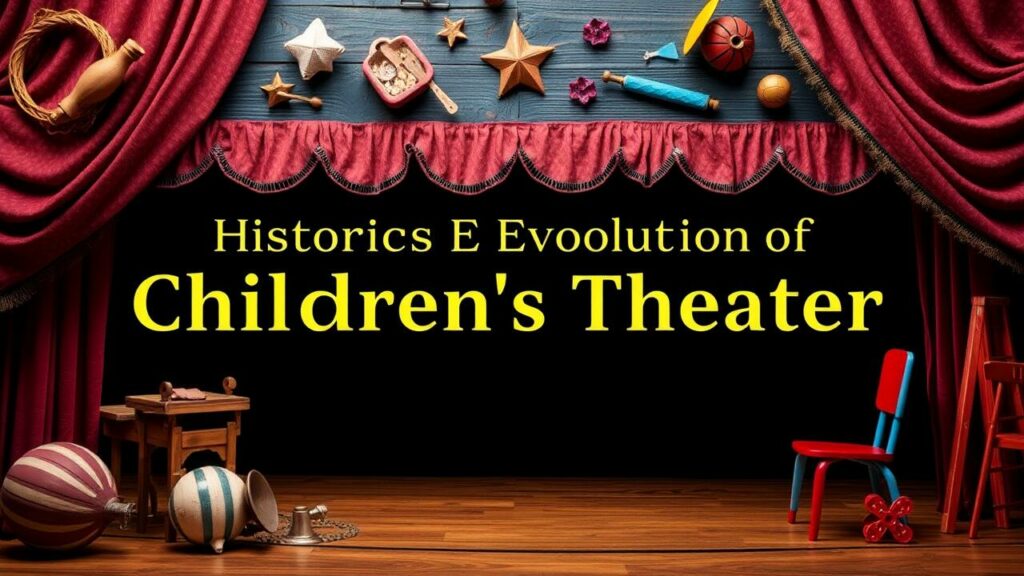
Addressing Social Issues Through Performing Arts
Children’s theater in San Diego has a rich heritage rooted in the Historical Evolution of Children’s Theater in San Diego, serving as a platform for discussions on social issues. The vibrant performances at the Pacific Plaza often feature live actors clad in colorful costumes, captivating the audience while conveying important messages. Notable venues such as the historic Palace Theatre have hosted productions focusing on themes like diversity, inclusivity, and environmental stewardship. The Valley School District has collaborated with local troupes to ensure that students engage with these thought-provoking performances, nurturing empathy through the arts.
Marie Hitchcock, a pioneer in children’s theater, emphasized the importance of using the stage to address societal concerns. Productions in the Mission Valley area often reflect the community’s values and challenges, engaging young audiences in dialogue about their world. The West House and Orange Ave venues provide intimate settings where children can watch these impactful stories unfold, seated close to the performers. Through this artistic expression, the Historical Evolution of Children’s Theater in San Diego continues to flourish, making strides in raising awareness and fostering understanding among the youth.
Conclusion
The Historical Evolution of Children’s Theater in San Diego is a rich tapestry woven from local culture and community values. Early performances drew inspiration from various artistic influences, engaging children and families alike in the joy of storytelling. Organizations formed around this vibrant art form, such as groups that showcased adaptations of classic narratives, including those inspired by Hitchcock’s suspenseful storytelling, which were artistically reimagined for young audiences. The collection of these initiatives highlights how the Historical Evolution of Children’s Theater in San Diego has been instrumental in shaping not only the theatrical landscape but also the cultural identity of the region as a whole.
FAQS
How did the San Diego theater community contribute to the creation of children’s theater productions in California?
The city of San Diego has a rich history of fostering children’s theater, with various organizations and community groups, including the Christian Community Theater and the Arts Academy, playing pivotal roles in creating theater productions for children. Notably, award-winning outdoor theatre and the establishment of dedicated children’s units within the theater building have significantly enriched the theater industry in California. This evolution has led to numerous first productions and classic adaptations, ensuring that children’s classics continue to thrive in the San Diego theater scene, including venues like the historic Liberty Theater and the Fox Theatre interior.
What role did historic events like the Panama California Exposition play in the development of children’s theater in San Diego?
The Panama California Exposition, held in 1915, significantly impacted the development of children’s theater in San Diego and the broader California theatre landscape. This historic event galvanized the San Diego community to create theater productions for children, paving the way for organizations such as the Jr. Theater and various theater programs. These efforts contributed to the growth of a vibrant theatre industry that continues to celebrate children’s classics and provides enriching experiences in the 500-seat theatre venues across the region.
How have organizations in San Diego created theater productions for children that reflect California’s rich cultural history?
In San Diego, various organizations have developed a range of children’s theater programs that encompass California’s cultural heritage. Notable venues like the Liberty Theater and Theatre Leo West have played essential roles in producing children’s classics. These initiatives have allowed children’s units to thrive, providing seat theater options that accommodate young audiences. Additionally, the historic reconstruction of certain venues ensures that the legacy of children’s theater continues to be celebrated at center stage in California’s vibrant arts scene.
What factors led to the emergence of children’s theater programs in San Diego that have since inspired productions across California?
The emergence of children’s theater programs in San Diego has been driven by a strong community effort, leading to the creation of theater productions for children that reflect unique storytelling. This includes the incorporation of children’s classics and innovative formats like drive-in theater to engage youth audiences. The liberty theater female-led initiatives have also played a crucial role in expanding the theatre program aimed at connecting younger generations with the performing arts, thus enhancing the overall cultural landscape of California. The efforts of the children’s unit and organizations like Centre Stage have collectively contributed to providing more seats and opportunities for children to experience live theater.
What unique aspects of San Diego’s children’s theater have influenced the creation of theater productions for children in California?
San Diego’s children’s theater has played a pivotal role in shaping the landscape of children’s theater in California. By focusing on engaging narratives and incorporating children’s classics, many local organizations have created theater productions for children that not only entertain but also educate. This emphasis on storytelling and interaction has inspired similar initiatives across the state, proving that San Diego has been instrumental in the broader development of the children’s theater movement. Additionally, the city’s vibrant culture and commitment to arts education have further enriched its children’s unit and overall theatrical offerings, making it a significant contributor to the California theater scene.
How has the theater community in San Diego inspired children’s classics that are performed throughout California?
The theater community in San Diego has played a significant role in inspiring children’s classics by creating innovative productions that cater to young audiences. These productions often adapt beloved stories into engaging performances, establishing a vibrant children’s theater scene that influences other regions in California. Additionally, San Diego’s unique approach to children’s theater encourages creativity and imagination, making it a focal point for various theater side jobs that focus on children’s performances, contributing to the overall cultural landscape of children’s units in the state.
How has the development of children’s theater in San Diego influenced children’s classics performed in California?
The development of children’s theater in San Diego has greatly influenced the creation and performance of children’s classics throughout California. Many productions in San Diego showcase local stories and themes that resonate with children, making them relatable. This approach has inspired other theaters, particularly in Los Angeles and beyond, to incorporate similar elements in their children’s theater offerings. As a result, San Diego has become a hub for innovative children’s theater, contributing to the overall evolution of children’s theatrical productions in California, including adaptations of children’s classics and the establishment of dedicated children’s units within various theater organizations.
How has the evolution of children’s theater in San Diego shaped the landscape of children’s classics performed across California?
The evolution of children’s theater in San Diego has played a crucial role in shaping the landscape of children’s classics throughout California. Through innovative productions and a commitment to high-quality performances, San Diego’s children’s theater has become a benchmark for excellence. This has led to the development of a vibrant children’s unit that not only entertains but also educates young audiences about important cultural themes and values, further enriching the overall children’s theater experience in California.
How have the various children’s theater productions in San Diego impacted the wider landscape of children’s classics in California?
The children’s theater scene in San Diego has significantly influenced the landscape of children’s classics performed across California by introducing innovative storytelling techniques and diverse cultural themes in its productions. The impact of San Diego’s children’s theater can be seen in how local companies create engaging adaptations of children’s classics that resonate with young audiences, reflecting the unique character of California and its rich artistic heritage. This strong foundation of creativity within San Diego’s children’s unit has also inspired other regions in California to develop their own children’s theater programs, ultimately enriching the statewide children’s theater community.
How has the growth of children’s theater in San Diego influenced the creation of children’s classics performed throughout California?
The growth of children’s theater in San Diego has significantly impacted the development of children’s classics across California. The vibrant scene in San Diego has fostered innovative productions that resonate with young audiences, encouraging other regions to adopt similar themes and styles. San Diego’s commitment to quality children’s theater helps nurture new talent and creativity, ultimately enriching the broader landscape of children’s classics in California.
